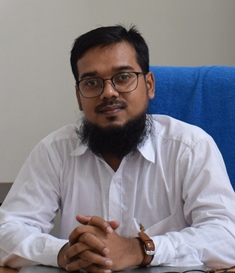Latest Articles
Original Research Article
ABSTRACT
Summary Regulatory compliance in transportation infrastructure asset management (TIAM) is hindered by aging assets, disjointed oversight, and changing policies. Traditional ways of inspecting and reporting by hand don't work well when you need to do a lot of them. This paper examines recent developments in Artificial Intelligence (AI) aimed at enhancing compliance via automation, real-time analytics, and decision support. We highlight techniques like natural language processing (NLP) for parsing regulatory texts and graph neural networks (GNNs) for modeling asset interdependencies. These are based on peer-reviewed studies on AI applications in transportation that were published between 2015 and 2025. For example, Graph SAGE and other GNNs have shown that they can accurately predict road accidents with less than 22% mean absolute error on traffic datasets [3]. Case studies of U.S. bridge inspections using AI-enabled digital twins show that labor costs can be cut by 20–30% and that each project could save up to $15 million [4, 5]. To deal with interpretability, explainable AI (XAI) methods find a balance between accuracy and openness. However, more complicated models often give up performance for less clarity [8]. Federated learning enables privacy-preserving model training utilizing distributed infrastructure data [9]. Climate simulations based on SSP2-4.5 scenarios show that AI can make the road network more resistant to floods, affecting as much as 13.1% of segments [11]. This work encourages reliable AI for long-term TIAM governance.
Original Research Article
ABSTRACT
Drawing on diverse research experiences on occupations linked to the exploitation of mineral resources since 2014, this paper offers a critical reflection on the existence of the CDLM as an instrument of mining governance and its relation to economic, social, environmental, and ethical development in the Agbaou Mine area. The analysis reveals that, despite institutional measures aimed at integrating local populations through mechanisms of sound mining governance, the living and working conditions of the host communities remain ambivalent. Based on a qualitative analysis of a corpus of data derived from both fundamental and applied research, this contribution highlights three major findings: (i) the composition, mode of designation, and organisational arrangements within the mining sector do not evolve within a genuinely participatory framework; (ii) the functioning of the CDLM stands in stark contrast to that of village institutions; and (iii) after more than a decade of activity at the Agbaou Mine, the overall assessment of the host communities’ quality of life remains mixed.
Original Research Article
ABSTRACT
This study analyses the ideologies that construct the discourse of living transplant recipients in a scientific approach. To achieve the expected results, a methodology based on a qualitative approach was used. This allowed us to obtain the following results: The choice of a living donor raises ethical issues that need to be taken into account by the actors involved. This practice is in total contradiction with the first principle of medical ethics, which is "first, do no harm", since a healthy person is subjected to surgery with its risk of complications. This is only possible if the beneficiary's expected goal far outweighs the disadvantages of sampling.
Original Research Article
ABSTRACT
This study examines how mechanisation, the transmission of skills, and religious beliefs structure the integration of Malian migrants into the bovine sector at Port-Bouët. Based on a qualitative approach combining semi-structured interviews and participant observation, it demonstrates that integration rests upon structured professional socialisation, intergenerational mentorship, and the strategic deployment of faith as both symbolic and economic capital. Findings reveal that mechanisation reshapes labour relations while enhancing the value of human and social capital. Migrant success thus emerges at the intersection of technology, skill acquisition, and religious rationalities, consolidating community anchorage and economic autonomy.
Original Research Article
ABSTRACT
The Seventh-day Adventist Church (SDA), South East Kenya Field (SEKEF) has made incredible attempts to transform its internal conflicts. However, it is still facing multifaceted hindrances that impede the achievement of intra-ecclesial conflict transformation for sustainable unity and peace. The study used a qualitative case approach, which permitted in-depth search for internal church dynamics, centering on understanding informants’ perspectives, experiences, and specific settings of intra-ecclesial conflicts. The target population was 280 with a sample size of 162 informants guided by Krejcie and Morgan (1970) tabulation research arrangement. Purposive, simple random sampling, and censor techniques were used to determine participants in the study. Questionnaires, semi-structured interviews and document analysis tools were employed to collect field data. Thematic, content and narrative analyses techniques enucleated data analysis. The study found out that there are several factors that impede sustainable conflict transformation for the unity of the SDA church in SEKEF. It concluded that such factors range from lack of effective leadership, silence on the part the of the church leadership, spiritualizing conflicts instead of addressing misconceptions, resistance to change, lack of professional mediation structures, poor communication, and dismissal of church-based ways in favour of litigation. It recommended the SDA church in SEKEF to invest more in handling conflicts in the church and avoid court litigation processes.
Original Research Article
ABSTRACT
This study examines the configurations of psychosocial resilience developed by former psychiatric patients in Bingerville, within a context marked by intense post-hospitalization stigma. Drawing on a qualitative methodology (including interviews, participant observation, and document analysis), it highlights how these individuals deploy relational and symbolic strategies to resist exclusion. The absence of integrated public policies underscores the pressing need for intersectoral mechanisms that promote their social recognition, autonomy, and effective reintegration into local communities.
Original Research Article
ABSTRACT
Neuroinflammation plays a central role in neurodegenerative diseases, with lipopolysaccharide (LPS) serving as a widely used experimental model for inducing neurotoxicity. This study investigates the modulation of nitric oxide (NO) and interleukin-6 (IL-6) in LPS-induced neurotoxicity using wistar rat models. 20 Wistar rat models weighing 150 - 180g were used and randomly assigned into four groups: Group 1 (Control), Group 2 (Low dose LPS - 0.25mg/kg), Group 3 (Medium dose LPS - 0.5mg/kg), Group 4 (High dose LPS - 1.0mg/kg). LPS was administered intraperitoneally, and neuroinflammatory markers were quantified using biochemical assays. Neurobehavioral activities (Navigation test, Object Recognition, and Barnes maze test) were recorded and analyzed using ANOVA. Results showed that NO and IL-6 levels increased in a dose- dependent manner following LPS exposure. The High-dose LPS group exhibited the highest levels of NO and IL-6, correlating with significant neuronal damage in the hippocampus. Elevated NO production suggests oxidative stress-mediated neurotoxicity, while increased IL-6 levels indicate an amplified inflammatory response contributing to synaptic dysfunction. Histopathological analysis revealed neurodegeneration, particularly in the hippocampal CA1 and CA3 regions, further supporting the role of inflammation in cognitive impairment. These findings highlight the interplay between NO and IL-6 in LPS-induced neurotoxicity and suggest that targeting these pathways could offer therapeutic potential for neuroinflammatory disorders, including Alzheimer’s disease and Parkinson’s disease. Understanding how these inflammatory mediators contribute to cognitive dysfunction may lead to novel strategies to mitigate neurodegeneration and improve cognitive outcomes in neuroinflammatory conditions.


















